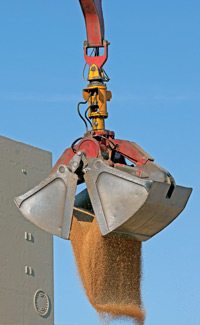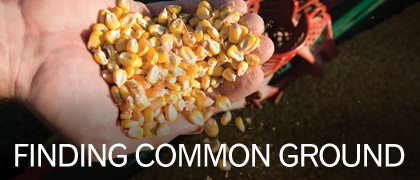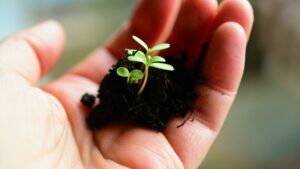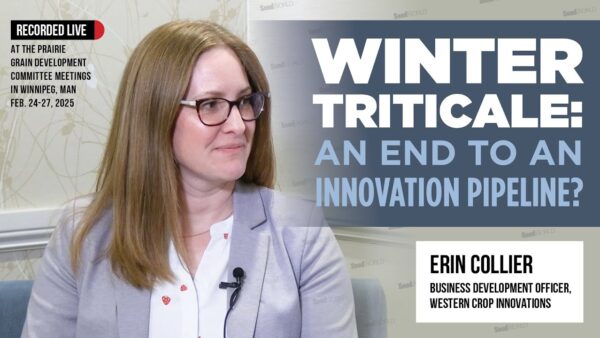A detailed status report on low level presence seed policy development in the United States, Europe and internationally.
Low level presence—which refers to the unintended presence, at low levels, of a genetically modified event that has undergone a science-based safety assessment for cultivation in at least one country, but not in the country of import—continues to be an issue for the seed industry. Zero thresholds are still challenging trade, and two trends make the need for policies that outline threshold or common testing standards more acute than ever: the rapidly increasing cultivation of GM seeds globally and the increasing global trade of seeds.
Status: The Challenges
One of the biggest challenges the industry is facing with respect to the potential for LLP in grain and seed relates to the different timing and duration of the approval processes for GM crops. This creates a situation of asynchronous approvals—approvals being granted on the same product at different times, often in unpredictable ways, due to delays in a country’s decision-making processes.
“This has an impact on a technology provider’s ability to commercialize a product, including the possibility that commercial launches have to be delayed a year or more,” explains Denise Dewar, executive director of plant biotechnology at CropLife International. “Countries are starting to address this for grain within international LLP [initiatives], but there is still a long way to go before it is solved.”
According to Marcel Bruins, secretary general of the International Seed Federation, the biggest roadblock ISF is witnessing now is the restrictions drawn up by governments that are struggling with how to deal with situations of LLP. “In that respect, ISF is stating that any national LLP policies should be science-based, practical and transparent,” says Bruins. “Such policies should also provide for mechanisms that are proactive and predictable for the global movement of seed, and provide flexibility with respect to risk assessment approaches. LLP policies should acknowledge that it is not practical or achievable to require zero presence of GE seed approved in one country but not approved in the country of import.”
According to Marcel Bruins, secretary general of the International Seed Federation, the biggest roadblock ISF is witnessing now is the restrictions drawn up by governments that are struggling with how to deal with situations of LLP.
Status: United States
In 2002, the Office of Science and Technology Policy coordinated an effort with the United States Food and Drug Administration, Environmental Protection Agency and the United States Department of Agriculture’s Animal Plant Health Inspection Service to update its existing regulatory authority for plant biotechnology to address instances of adventitious and low level presence. “These actions were aimed to account for increased research and development and field trials, and were intended to minimize the chances of a regulated product from entering commerce,” says Matt O’Mara, director of international affairs for the Biotechnology Industry Organization. “For example, FDA’s early food safety evaluation encourages developers to consult with FDA prior to conducting field trails.”
Today, O’Mara says the U.S. government is actively engaged in the global LLP dialogue with other countries such as Canada. “Industry sees great value in having this global dialogue encourage major exporting and importing governments to take a proactive approach in addressing LLP, in order to minimize impacts on trade,” he says.
The United States has been focused on working with other countries on the development of an Organization for Economic Cooperation and Development paper on seed LLP, which has just been finalized by the OECD Working Group on the Harmonization of Regulatory Oversight in Biotechnology, says Bernice Slutsky, senior vice president of domestic and international policy for the American Seed Trade Association.
“The United States is the chair of this working group,” she says. “The OECD paper lays out the principles that can be used by regulators when faced with a seed LLP situation. This document has been accepted and will now go through the declassification process in OECD when it will become an official and public OECD document.”
Status: International
CropLife International is also excited about the passing of the new OECD document, entitled Low Level Presence of Transgenic Plants in Seed and Grain Commodities: Environmental Risk/Safety Assessment and Availability and Use of Information, which Sarah Lukie, managing director of multilateral and regulatory affairs, says is positive for the entire global seed industry.
“The scope of this document covers LLP situations where seed shipments contain low levels of transgenic seed that have been reviewed for environmental risk/safety and received authorization for commercial cultivation—unconfined release—in one or more exporting countries but not in a country of import,” says Lukie.
The issue of LLP in seed raises questions regarding environmental risk/safety and compliance with mandated legislative requirements for the importing country as well as the seed and commodity trade industries in both importing and exporting countries, Lukie says.
“Consequently, an environmental risk/safety assessment may be undertaken by the importing country to evaluate the environmental risk/safety of the unauthorized transgenic plant in the LLP situation, not for the purpose of authorization, but rather, the assessment can provide a basis for, and may be used by, the importing country to inform decisions to mitigate and/or manage the LLP situation,” she says. “This newly-completed document presents approaches to risk/safety assessment in LLP situations where there is knowledge of the identity of the unauthorized transgenic plant.”
ISF has also been very active addressing LLP and has developed a position paper entitled ISF View on Low Level Presence in Seed, which is up for adoption at the 2013 ISF World Seed Congress in Athens.
“With the document, the international seed industry wishes to present its views of LLP in seed with the intent of putting forward information that will be useful to national authorities as they develop their policies for addressing this important issue,” explains Bruins. “The commitment of the seed industry is to provide farmers with a safe and reliable supply of high-quality seed varieties.”
According to Slutsky, who says ASTA played an important role in its development, “this paper will be very valuable when working with governments around the world on this issue.”
Adventitious presence in agriculture refers to the accidental or unintentional appearance of foreign material in a product. This usually happens in the production, harvesting, storage and marketing of grains, seeds or food products. |
Status: Europe
At present, there are no EU-wide threshold levels for the inadvertent presence of GM seeds in batches of conventional seeds. “Although EU policy requires that all conventional seed should be free of traces of GM, it has never established standard sampling and detection criteria that would allow seed producers and farmers to be a
ble to confirm that their seed is in conformity with EU law,” says Carel du Marchie Sarvaas of EuropaBio.
Divergent national approaches to sampling and detection of GM traces in seed distort the internal market, says du Marchie Sarvaas. “In several member states legal certainty is minimal and risks and costs to business operators are disproportionate. The rapid increase of GM cultivation around the world makes the need for a common EU testing standard and a labeling threshold more acute,” he says. There have been a range of costly incidents affecting both GM and non-GM seed producers in EU markets.
Despite political support for a solution, such as the examples listed below, from both public and private sectors, no political solutions have been proposed.
• European ministers have unanimously requested a solution for many years. European ministers have twice unanimously requested an adventitious presence in seeds threshold. In 2006, the Council of Agricultural Ministers invited the European Commission to “… come forward, as soon as possible, with community labeling thresholds for seeds.” In 2008, the Council of Environment Ministers unanimously invited the commission to “adopt practicable AP in seeds thresholds as soon as possible.”
• The European Commission has been aware of the need to address technically unavoidable presence for over a decade. In 2002, Commissioner Margot Wallstrom wrote that setting tolerance thresholds is “the only way to address the problem. Closing our market completely is not a viable option.” In 2004, a College of Commissioners debate concluded that: “… labelling thresholds … should urgently be finalized.” A second debate in 2005 in the college reconfirmed this. In 2007, the commission’s midterm review of life sciences asked for a threshold. In 2008, President José Manuel Barroso’s Biotech Sherpa Group called for an AP threshold.

Divergent national approaches to sampling and detecting of GM traces in seed distort the internal market, says Carel du Marchie Sarvaas of EuropaBio. |
• The Scientific Committee on Plants wrote in 2001 that seed thresholds were needed. In 2006, a commission-sponsored Joint Research Centre study again emphasized the urgent need for AP thresholds for seeds. Many national scientific authorities have recommended the same.
• The European seed industry and European farmers’ organizations have asked for an AP threshold level for over a decade. In 1999, the seed industry asked the commission to set threshold levels for adventitious presence of GMOs in conventional seed. Between 1999 and 2012, the seed industry and farmers have asked for an AP level in numerous letters, events and meetings with the commission and member states. In 2012, the European Seed Association and EU farm lobby group Copa-Cogeca, together with 10 other food chain organizations, asked Commissioner John Dalli to adopt a “technical solution for seed: a testing and sampling protocol for seed.” The request was repeated to Commissioner Tonio Borg in late 2012.
While all of these movements signal the political desire for progress, most in Europe’s seed industry, including EuropaBio, agree that today further political action is needed to restore the EU single market in seed—in other words, “a single set of protocols for sampling and analysis for GM presence in seed is needed, as a start to re-establishing the single market in seeds,” says du Marchie Sarvaas.
Specifically, he says the European Commission and member states must move to:
1) set clear and practicable technical testing protocols for detecting the presence of GM seeds in conventional batches; and
2) establish labeling thresholds for adventitious presence of approved GM seed in conventional seed, and in so doing eliminate the diverging national approaches.
Working Together
Other than through the OECD, Europe is not currently working with countries such as the United States and Canada on LLP. However, Slutsky says the U.S. government has worked closely with Argentina, Brazil and Canada in the global LLP dialogue. These countries have also worked together to raise the importance of Europe adopting a practical approach to LLP.
“The Seed Association of the Americas has had a seed LLP project ongoing for the last two years, and one of the primary components of this project is educating regulatory authorities on the best management practices of the seed industry and that seed quality standards always have a tolerance or threshold associated with them,” says Slutsky. “We are making progress in moving toward a better understanding of these normal practices in the seed industry and how they could apply to seed LLP policy.”
Bruins says progress is being made no matter what side of the ocean you stand on. “Having a common LLP position that is supported by the whole seed industry is already a first step toward a better understanding and hopefully, in due time, an in-depth cooperation between countries and continents,” he says.
Julie McNabb














